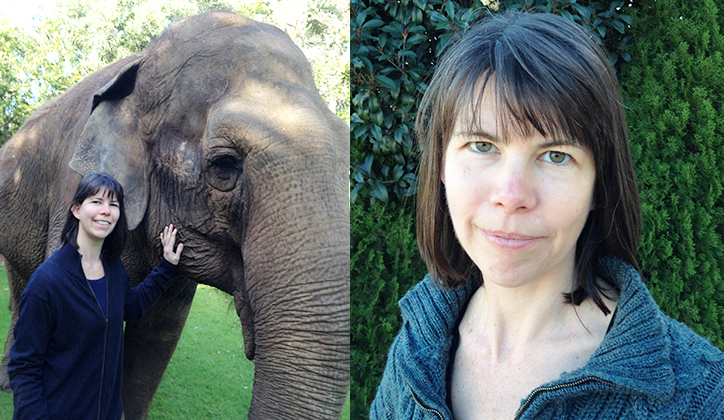We’re profiling nominees in the lead up to the 2014 Macquarie University Research Excellence Awards this Thursday 2 October.
This week meet Dr K-lynn Smith from the Department of Biological Sciences,who is a nominee for an Early Career Researcher of the Year – Science and Engineering Award.
How long have you been a researcher at Macquarie?
Nine years. I worked for the US National Science Foundation for five years before coming to Macquarie to undertake my PhD. The world-class intellectual environment and the unparalleled research facilities drew me here. Macquarie is a leader in the field of animal behaviour and consistently pushes the boundaries of new scientific discoveries. I am proud to be able to contribute to this culture of knowledge.
I was drawn to research because…
Research is one of the few fields were questioning everything is not only acceptable but it’s encouraged. There’s no other profession that would allow me to combine my love of technology and behavioural science. Where else could you get paid to make a robotic chicken in order to understand the origins of language?
What would be an ‘elevator pitch’ of your research area?
My field of research is creative conservation. I apply human communication technology to improving endangered species conservation. Just as communication is critical to our daily lives, so it is for social animals. Take for example, Asian elephants. In the wild they encounter and communicate with many different individuals from their own and other herds over time. We want to extend the opportunity for communication to elephants across two zoos on opposite sides of the continent by using technology. Some day in the future, we might provide a permanent link for elephants at distant zoos to communicate over the Internet, like Face Time or Skype for elephants.
Large mammals are not the only ones who can benefit from the creative application of technology. Birds also have complex communication. That’s why I work with the critically endangered Australian Regent Honeyeater. Captive rearing and release is helping to boost their numbers but until recently, we knew very little about their songs and how they choose a mate. A better understanding of these factors helped me design a system of virtual tutors to teach the captive-born young to sing like their wild counterparts. Learning to communicate is an imperative for finding a mate, which is critical to the species’ survival.
In layman’s terms, what is the wider impact of your research?
My research brings to bear human communication technology to improve the welfare of captive animals through long-distance social interactions. Because my research involves one of the largest animals in the world and one of the smaller, it shows how broadly applicable these innovations are for the study and conservation of all social animals.
Who is/was your biggest research mentor?
Professor Chris Evans left an indelible impression upon my research. He was a leader in the field of animal communication. He had an encyclopedic knowledge of the animal behaviour literature and eloquence to his writing that conveyed the rigor and beauty of his science. He also had a passion for technology that rivalled my own and always encouraged me to push the boundaries of what was thought possible.
If I were given $1million in research funding, the first thing I would do is…
I would set up a creative conservation research fund to foster collaborations between the technology industry (particularly those developing communication systems such as touch screen anywhere and virtual reality systems) and behavioural scientists. The intersection of these two fields represents the future of conservation and the study of animal communication.
My favourite and/or most proud research moment was when…
My proudest research moment was winning the 2010 Australian Museum Eureka prize with my mentor, Chris Evans; it meant that not only was our research having an impact on the field of animal behaviour but that it was also reaching the general public and changing the way we view our world.

